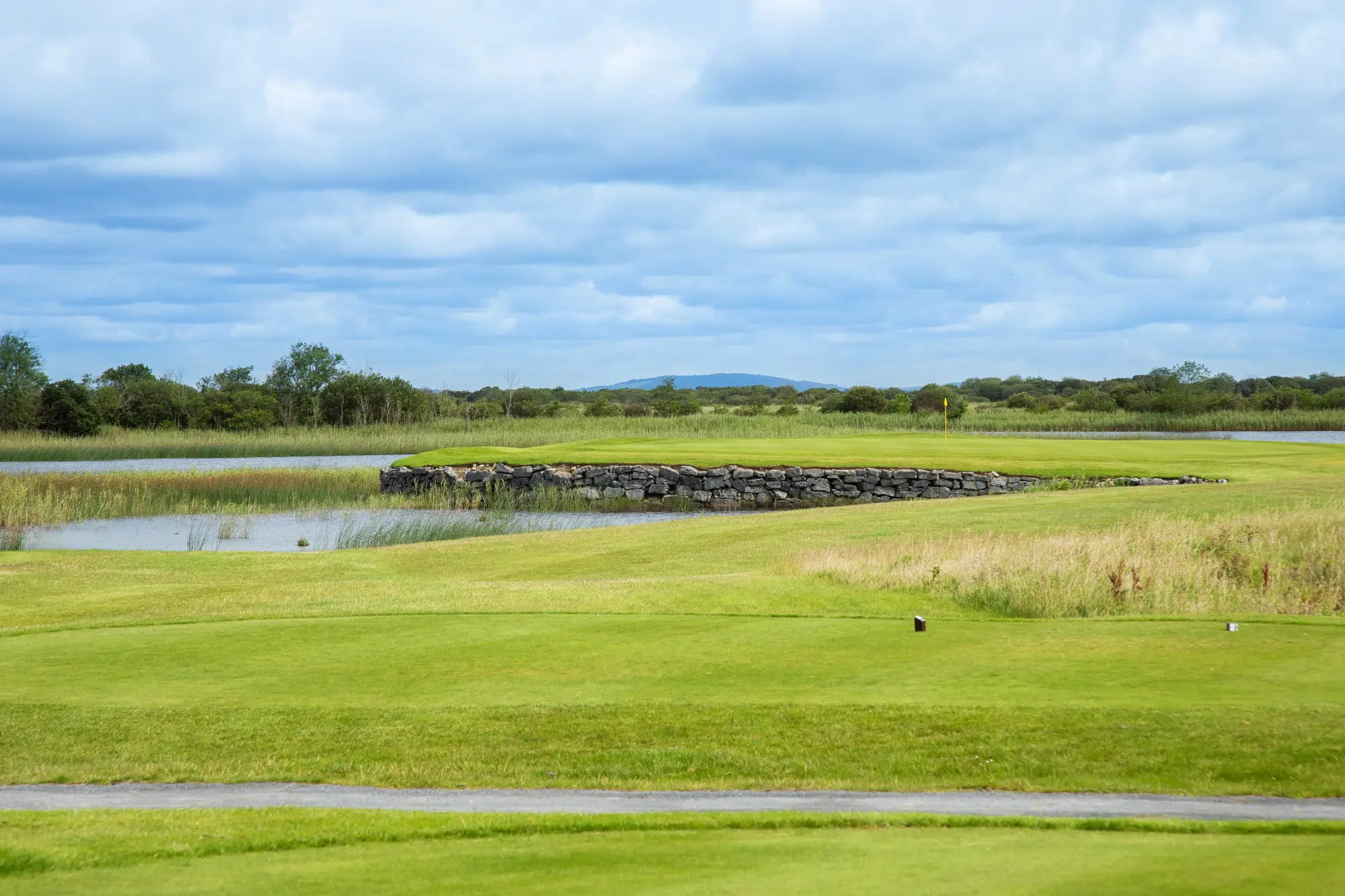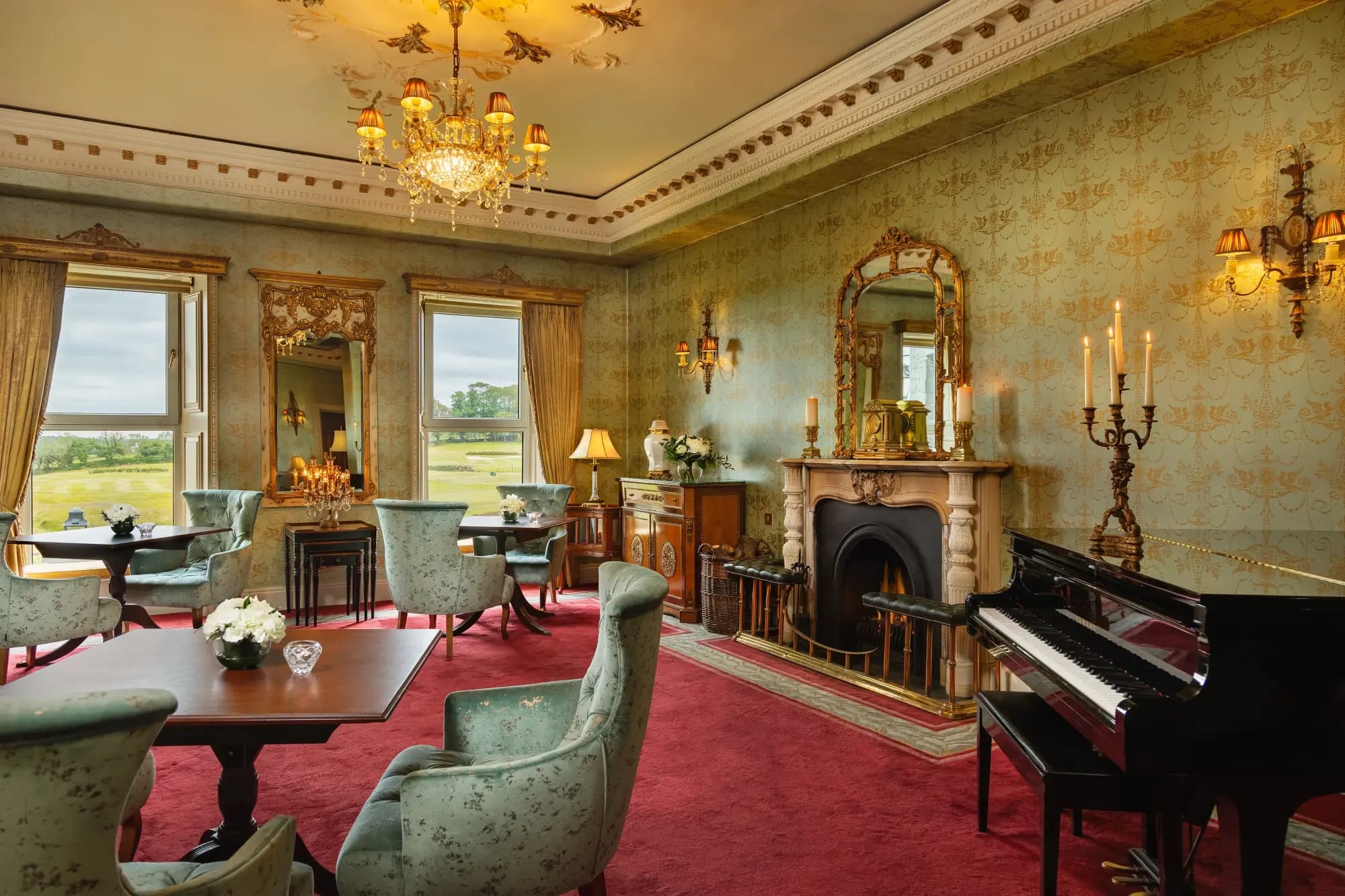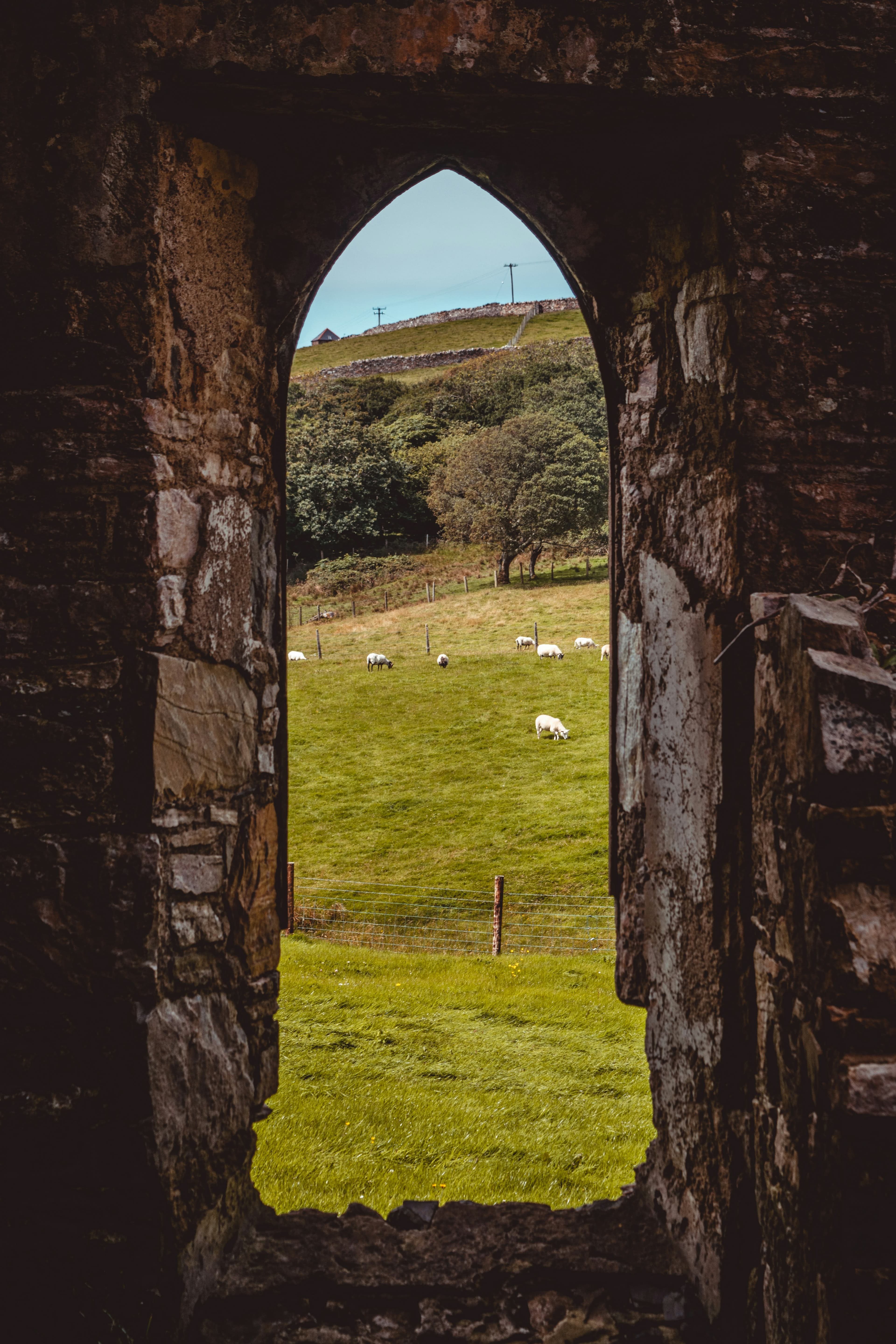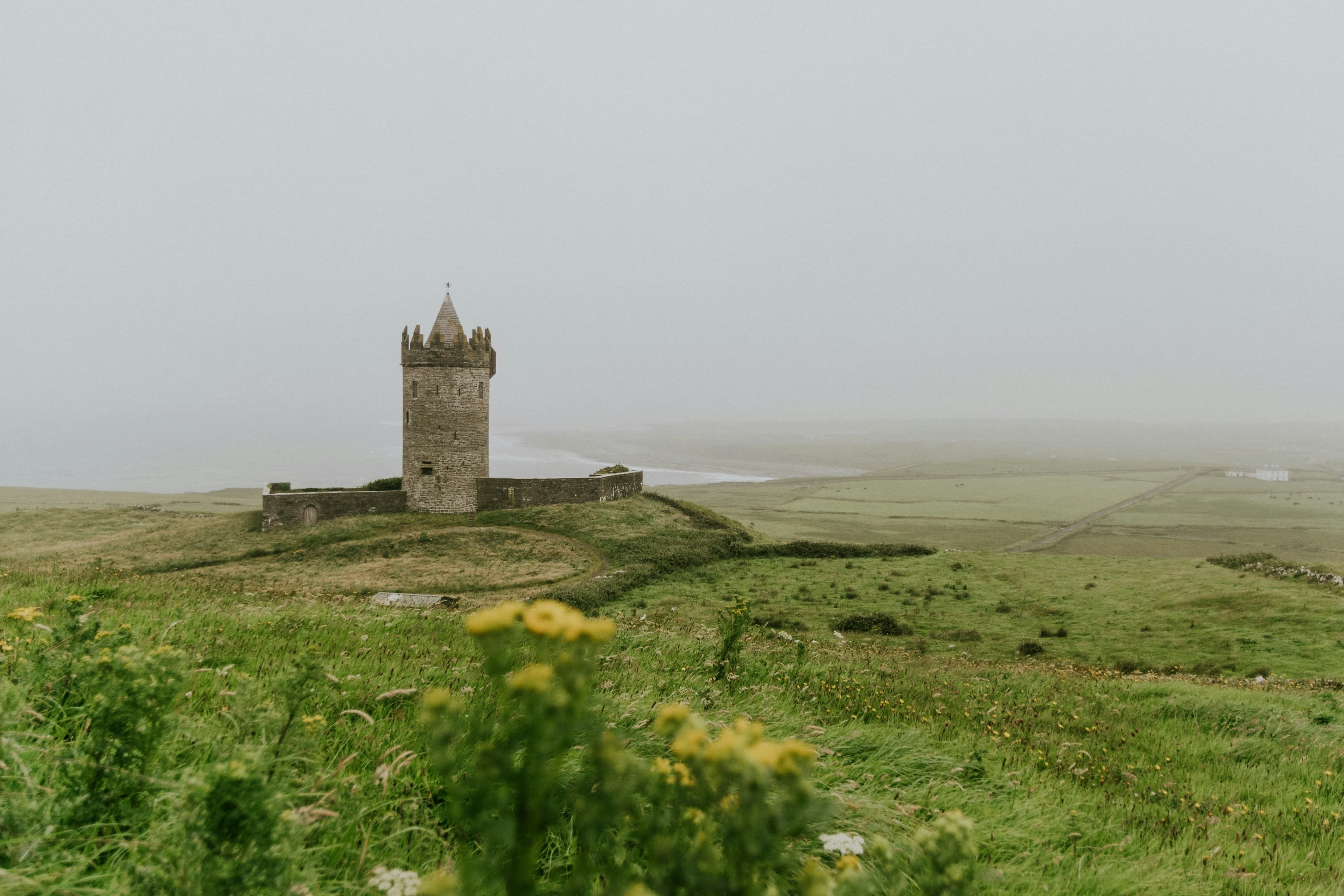Ireland is small and mighty (it’s about the size of South Carolina). You can really experience a lot — luxe countryside castles, charming towns, bustling cities, stunning seaside cliffs, rolling green hills — without traveling too far.
The people are witty and welcoming, inhabiting a delightful blend of friendliness and crackly humor that result from overcoming historic struggles (famines, political strife). The Irish people are tough — they’ve endured a lot — and they’ve come out on the other side as warm as ever.
The country, too, is as vibrant as ever. Dublin is a dynamic city brimming with local pubs, gourmet restaurants, beautiful hotels, museums, parks — not to mention a rich literary and intellectual history (many an author and playwright has called Dublin home). There are several other towns worth exploring, each with their own unique vibe and energy. Ireland’s natural splendor, from enchanting woodlands and lakes to rugged mountains, captivates. And then there are the castles, of course.
Despite its small size, Ireland has something for everyone, and does not disappoint. When you connect with Fora, our advisors will work with you to understand what you’re looking for, and craft your dream itinerary from there. In the meantime, below is a sampling of things to do, places to eat and where to stay in a few lovely Irish cities, a little Ireland travel inspiration, if you will.
Ready to jet off? Connect with Fora to plan and book your dream Ireland getaway today.
The quick and dirty:
Currency: €, Euro (EUR)
Languages: Gaeilge (Irish) and English
Airports: Dublin Airport (DUB), Shannon Airport (SNN), Cork Airport (ORK), Ireland West Airport Knock (NOC)
Transportation: If you’re planning on visiting several spots within Ireland, renting a car is a fun option (it also helps that the country’s scenery is breathtaking and very conducive to road trips). Note that cars drive on the left side of the road and, especially in the cities, the roads can be narrow, so smaller cars are recommended. Ireland’s rail and bus systems are also very efficient and affordable, great for traveling between cities. In Dublin, the city’s tram system, the Luas (Gaelige for speed), is used by locals and travelers alike for exploring the city.
Best time to visit: Ireland benefits from a relatively mild climate; it’s beautiful any time of year, but expect lots of rain. Fall and winter tend to be less crowded, so these seasons are great for exploring the country’s cities. Fall and winter also welcome a slate of festivals and celebrations. (Visiting around Halloween is highly recommended.) In the spring, the countryside’s already vibrant colors seem to pop even more. In the summer, the weather is at its prime, but it's also peak season, so expect more crowds.
Ideal length of stay: Ireland is small, so you can cover a lot of ground in relatively little time. Three days is totally doable, especially if you’re only planning to explore Dublin. If you want to travel around, see some additional towns or spend a few nights in a countryside castle, five to 10 days will allow more breathing room.
Signature dishes: boxty (Irish potato pancake), colcannon (mashed potatoes with cabbage), soda bread, stew, barmbrack (sweet yeasted raisin bread)
Key phrases: dia dhuit (hello, dee-ah gwit), le do thoil (please, luh duh hull), go raibh maith agat (thank you, guh rev mah ah-gut), sláinte (cheers, slan cha)
Dress code: Colorful raincoats, rubber wellies, cozy sweaters and an umbrella
Dublin
Ireland’s capital, on the edge of Dublin Bay in the Irish Sea, is always abuzz. The people are warm and friendly — famous for their signature craic, a contagious liveliness inflected with a killer wit. Dublin’s literary, intellectual, artistic and philosophical pedigree is quite impressive; Oscar Wilde, Samuel Beckett, James Joyce and Bono are but a few of the people who have called the city home. In St. Stephen's Green, a public park and garden in the city center, you'll see statues of many such notable Dubliners, along with other pieces of art, ponds, birds, a playground...It's one of Dublin's most pleasant places to be. About a quarter of Ireland’s population live in the Dublin area, so the energy is always high. A diverse array of historical influences — from the Vikings to refugee French Huguenots — only add to its dynamism.

Image courtesy of The Westbury
Where to stay in Dublin
Conrad Dublin: The inaugural Conrad hotel, with a clean, modern aesthetic and spacious rooms. Fora Perks include $100 hotel credit, breakfast daily, an upgrade and extended check-in/out.
Dylan Dublin: An under-the-radar boutique gem, housed in a handsome 20th-century Victorian building. Fora Perks include $100 hotel credit, a welcome amenity, breakfast daily for two, an upgrade and extended check-in/out.
InterContinental Dublin: A grand stay on the outskirts of town, amid sprawling gardens, vast lawns and horse stables. Fora’s VIP IHG Luxury perks include $100 credit, welcome amenities, breakfast daily, an upgrade and late check-out.
The Westbury: Sophisticated and modern, with a tasteful art collection and legendary afternoon tea. Fora Perks include $100 food / beverage credit, breakfast daily, an upgrade and extended check-in/out.

Image courtesy of The Shelbourne
The Shelbourne: A beautiful, historic stay overlooking St. Stephen's Green. Fora’s VIP perks include a complimentary lunch or dinner for two, breakfast daily, an upgrade and extended check-in/out.
The Fitzwilliam Hotel Dublin: Recently renovated, right on St. Stephen’s Green and near lovely streets perfect for wandering. Fora’s exclusive Preferred Platinum perks include $100 hotel credit, a welcome amenity, breakfast daily, an upgrade and extended check-in/out.
The Merrion Hotel: A stylish stay, complete with a two-Michelin-Star restaurant, comprised of restored Georgian townhouses. Book with Fora to receive a complimentary three-course meal for two, breakfast daily, an upgrade and extended check-in/out.
What to do in Dublin
Dublin feels local and intimate. It’s the perfect city for wandering, but also boasts several must-see sites. See the 1,200-year-old Book of Kells, the famed illuminated Celtic manuscript, at Trinity College Dublin, which also hosts several other exhibitions worth checking out. Visit the historic Dublin Castle and its art-filled gardens. For additional garden action, the National Botanic Gardens of Ireland are a must, as is the quiet Garden of Remembrance, a memorial garden commemorating those who fought for Irish independence. Museum-wise, options abound. The Hugh Lane Gallery shows work by the likes of Francis Bacon, Sean Scully and other notable artists, while the National Gallery of Ireland displays an impressively vast selection of work from Velázquez, Rembrandt, Vermeer, Degas, Picasso…the list goes on. If modern art is more your style, make a beeline for the Irish Museum of Modern Art (IMMA).
Where to eat in Dublin
If Dublin’s gastronomic scene conjures up thoughts of corned beef and cabbage, you most certainly can get your hands on some, but the city boasts an array of fantastic restaurants, pubs and cafés that are redefining the Irish capital as a veritable culinary destination. For refined, modern European cuisine served in sleek, unstuffy settings, head to the prix-fixe-only gem Bastible and the casually excellent Orwell Road, both of which are serious about sourcing the best local Irish ingredients. Bibi’s and Urbanity are great for cool-cozy-café vibes and comforting, homemade, thoughtfully sourced nourishment, while The Fumbally serves as a lively kitchen, café, market and community space. For traditional Irish fare (plus a few modern spins) served in a casual, welcoming space, you can’t go wrong with The Winding Stair (also a charming bookshop) or The Woollen Mills Eating House, sister restaurants that celebrate their historic Irish heritage. And Cornucopia, just off the Trinity College Dublin campus, is perfect for plant-based dishes inspired by Irish tradition.
Galway
Galway, on Ireland’s west coast, was named the European Capital of Culture in 2020, and for good reason. The city hosts a vibrant music and arts scene, and is known for its bohemian charm. The town is also home to several festivals throughout the year, most notably the Galway International Arts Festival, held every summer. (The festival’s 2024 line-up includes Jess Glynne, Annie Mac, KETTAMA and other renowned musicians.)




Images courtesy of Glenlo Abbey Hotel & Estate
Where to stay in Galway
Glenlo Abbey Hotel & Estate: A historic 18th-century lakeside estate on sprawling green grounds with a beautiful golf course. Fora’s VIP partner perks include a complimentary nine-hole round of golf for two, an afternoon tea experience for two, breakfast daily, an upgrade and extended check-in/out.
The Dean Galway: Charming and eclectic, a boutique stay with a youthful vibe and a killer gym.
What to do in Galway
Peruse the town of Galway’s charming boutiques and lively pubs, many of which play traditional Irish music. The Galway Market, right next to St. Nicholas’s Church and open on weekends, is the place to go for local, artisanal crafts and gourmet food (homemade cookies, curry, crêpes, local cheese and charcuterie…). Take a day trip to the splendid Cliffs of Moher, the famed rugged cliffs, or to the idyllic Connemara National Park, both of which are about a 90-minute (and very scenic) drive from town. For additional scenery closer to town, meander down the Salthill Promenade (or Prom), a coastal walkway that stretches from the edge of town to the Blackrock Diving Tower, where visitors kick the wall across from it for good luck.

The Cliffs of Moher
Where to eat in Galway
Galway has become a foodie destination, where chic eateries serve beautiful dishes crafted from locally sourced ingredients. At Kāi, diners savor organic, wild-foraged, hyperlocal cuisine in a warm and welcoming atmosphere. (Dinner reservations are a must.) At Éan, savor biodynamic wines and sophisticated fare (citrusy wild bass crudo, tangy sourdough bread with cultured butter) at sleek pale-wood tables amid stone walls. For an exquisite tasting menu that changes daily (seasonality is the name of the game), head to the Michelin-Starred Aniar 2.0, and for a community staple that hits the spot any time of day, the exceptionally tasteful Ard Bia is a must.
Cork
As Ireland’s second largest city, Cork is bustling and dynamic, known for a vibrant arts scene and a history of craftsmanship. The city was originally founded by the Norse, and used to serve as a key player in Europe’s butter trade (unsurprisingly, food is still big here). Plus, every October, Cork hosts the iconic Guinness Jazz Festival, a bucket-list event for the jazz enthusiasts among us.

Image courtesy of Castlemartyr Resort
Where to stay in Cork
Hayfield Manor Hotel: Handsome and grand, a five-star stay with stellar dining, beautiful gardens and a spa. Book with Fora to unlock a champagne afternoon tea experience for two, breakfast daily, and upgrade and extended check-in/out.
Castlemartyr Resort: A sprawling countryside retreat consisting of an 800-year-old castle and a 17th-century manor house. Fora’s Preferred Platinum perks include $100 resort credit, a welcome amenity, breakfast daily for two, an upgrade and extended check-in/out.
What to do in Cork
To experience a little bit of Cork’s extensive history, explore the Cork City Gaol, a former women’s prison. As mentioned, Cork played a key role in Europe’s butter trade. The city’s delightful Butter Museum covers the history and importance of the trade, dairying, rearing cattle, butter making, butter culture and more. The multifaceted Crawford Art Gallery features over 3,000 artworks ranging from pieces made from 18th-century Irish and European pieces to sculpture to modern video. And you cannot visit Cork without stopping by its famed English Market, one of Europe’s oldest covered markets. Browse local produce, international treats, sweets, seafood, meats and more. And for a day trip, the Blarney Castle, home of the kissable Blarney Stone, is a short drive from town.
Where to eat in Cork
The Glass Curtain, located in a former bakery, highlights flavorful, sustainable and locally sourced food. You can’t go wrong with their tasting menu or their à la carte offering. The bright Da Micro brings a taste of Italy to Ireland, and works with local Irish farmers, producers and artisans. At Castlemartyr Resort, Terre, with its two Michelin Stars, open kitchen and Asian-inflected menu, beckons.
Killarney
Killarney blends timeless Irish tradition, modern Irish charm and a stunning natural landscape. It’s often used as a starting point for the Ring of Kerry, a scenic driving route along the Iveragh Peninsula. The town is also a great homebase for exploring the remarkable Killarney National Park, a UNESCO-designated Biosphere Reserve, which boasts magical forests and rivers, rugged mountains, lakes, woodlands, historic estates and Ireland’s last-surviving indigenous herd of red deer.

Image courtesy of The Killarney Park
Where to stay in Killarney
The Killarney Park: A welcoming, intimate, family-owned stay in the heart of Killarney Town. Book with Fora to get a complimentary three-course meal for two, breakfast daily, an upgrade and extended check-in/out.
Aghadoe Heights Hotel & Spa: A luxe retreat overlooking the Lakes of Killarney and the MacGillycuddy's Reeks mountains. Fora Perks include $100 food / beverage credit, breakfast daily, an upgrade and extended check-in/out.
The Europe Hotel & Resort: Elegant and modern, with panoramic views and a mere five-minute’s drive from town. Book with Fora to receive $100 food / beverage credit, discounted golf fees, breakfast daily, an upgrade and extended check-in/out.
What to do in Killarney
Here is where to go to indulge your desire for outdoor adventure. The natural splendor of Killarney National Park more than merits ample exploring, whether that be in the form of walking, cycling, hiking, rock climbing, kayaking, golfing or horseback riding. If you’re a history buff, Killarney delivers on that front, too: the park is also home to historic abbeys, castles and estates (a few highlights include Muckross House, Muckross Abbey and Ross Castle). But the town, too, is absolutely charming, brimming with boutiques, restaurants, pubs, cafés and pastel-hued storefronts.

Killarney National Park
Where to eat in Killarney
At The Peregrine, named after a protected bird species in Killarney National Park, you’ll enjoy gourmet cuisine in a handsome, sophisticated space within the Killarney Park hotel. For fresh fish n’ chips made from locally caught fish, head to Quinlan’s Seafood Bar, a casual hub for the comforting classic. Another fun spot, also from the Quinlan’s family, is Mad Monk, where seafood reigns supreme, but there are options suitable for all diets as well.
Countryside castles
Ireland’s castle game is world-renowned, and for good reason. The fact that you can stay in many of the country’s regal historic estates, which are destinations in and of themselves, is all the more reason to visit. Below, a sampling of Ireland’s castles-turned-luxury-hotels, each of which allows you to fully live out your castle fantasies, and each of which merits a dedicated detour.




Dromoland Castle: A 16th-century County Clare hideaway with a bucket-list-worthy golf course. Fora’s partner perks include $100 food / beverage credit, welcome treats in select rooms, breakfast daily, an upgrade and extended check-in/out.
Adare Manor: A veritable Irish icon, with expansive grounds and numerous outdoor activities, including world-class golf. Book with Fora to receive a complimentary afternoon tea experience for two, breakfast daily, an upgrade and extended check-in/out.
Park Hotel Kenmare: A stately manor amid manicured gardens, complete with an out-of-this-world spa. Fora’s partner perks include $100 food / beverage credit, breakfast daily, an upgrade and extended check-in/out.
Ready to jet off? Connect with Fora to plan and book your dream Ireland getaway today.
